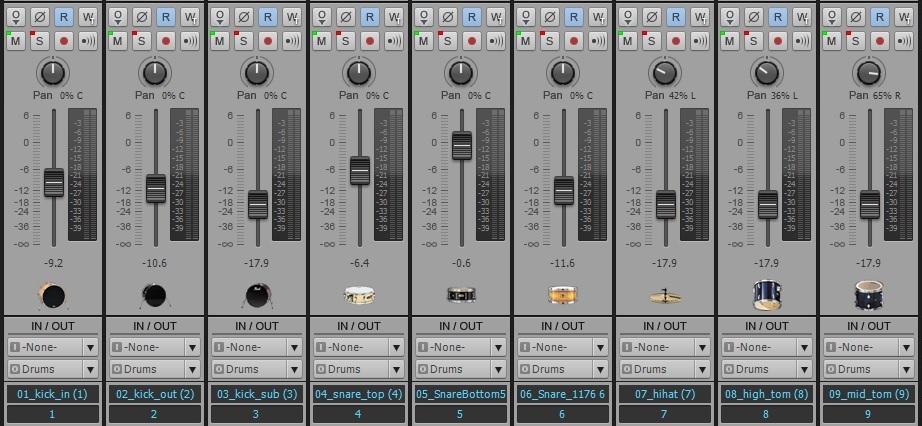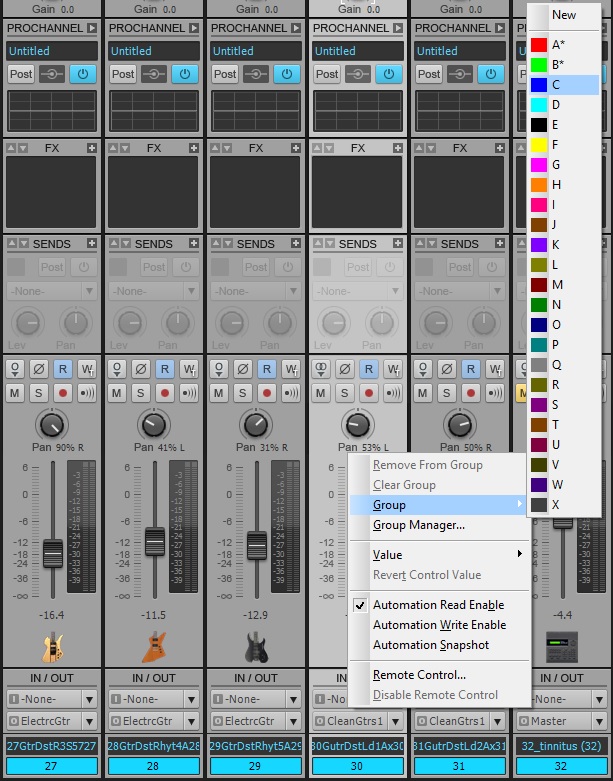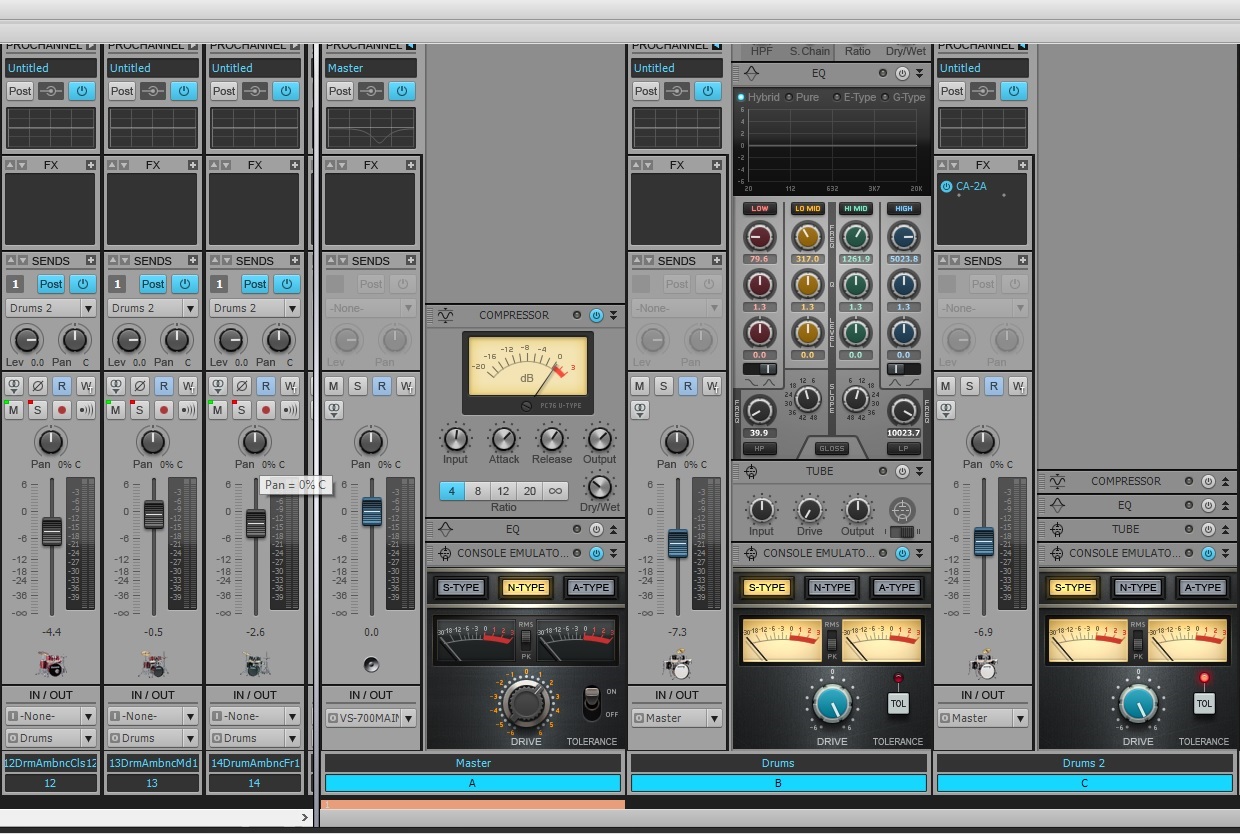10 Tips For the Aspiring Mix Engineer
Last updated on 3/11/2016by Dan Gonzalez
Beginning a mix is something that many people have a hard time figuring out. There really is no right answer to this question because it is something that comes natural to every engineer. If you have trouble getting your mix started try developing a workflow for yourself and soon enough you will have the ability to pull up stems from just about anywhere and begin blending your tracks with ease.
1. Listen to the reference songs that were given to you by the artist to better understand where the mix will be heading. If you have a predetermined idea of the sonic characteristics of this mix without considering the supplied references then you have wasted your own crucial time on a mix that was heading nowhere. Always make sure that you client is happy with the mix before you do anything drastic to it. In some scenarios completely missing the objective of the mix could cost you the gig. Some groups like to test the water with multiple mix engineers to see what they can deliver.
2. Begin every mixing session by listening to what you have received from the tracking engineer whether that role was fulfilled by you or not. Import your stems and set all of the faders to 0dBu and hit play. Once a song meets the mixing process it should no longer need editing, arranging, drum replacing, vocal tuning, or reamping. If you are still in the process of these duties then finish them! Your CPU will thank you. Those processes are objectives that should have been completed before the actual mixing session. Unfortunately sometimes mixing can become a patch job depending on the skill level of the engineer that the artist used.
3. Setup groups to make your workflow quicker and more efficient. Every DAW has it’s own way of grouping tracks. Get to know them and understand how they work. If you can set up independent Mute, Solo, Fader, and Bypass groups then do it. As you become a more experienced engineer your sessions will begin to grow larger. Understanding how to simplify large session within minutes will keep stress level to a minimum. The most stressful caveat to the mixing process is when clients are present and have to wait on you for simple things. You always want to be waiting on the client and not the other way around.
4. Route your tracks to buses so that you have one master level control for an entire instrument. If you have 18 Drum Tracks, 3 Bass Tracks,15 Guitar Tracks, and what seems like an infinite amount of Vocal Tracks then you would benefit from having a single control for each instrument that sit side by side in your session. Bussing large amounts of tracks ties into simplifying your sessions. Typically I will send all of my tracks to their own respective buses and then bus those tracks to the master fader. This helps organize your session as well as gives you a definitive understanding of what your levels look like for each group of instruments. If everything is sent to your Master Fader then it becomes somewhat of a guessing game when trying to understand which audio track in your massive session is driving the song to clip.
5. Understand that you do not have to pan hard left and hard right just because there is Pan Pot present. Many beginner engineers will pan something hard left and hard right without understanding the gravity of what they are doing. This can typically happen with double-tracked guitar performances, double-tracked backing vocals, piano recordings, choir recording and toms in a drum set. Sometimes panning something too wide can cause the mix to fall apart in the middle so do not make this an automatic habit when first opening a mix. I’ve seen some engineers go as far as generating a basic levels mix by disabling the stereo interleaved button on the master track and get their levels in mono.
6. Limit yourself by balancing the signals the best you can without applying any effects. This practice will train you to listen more intently. Obviously the balance does not have to be perfect but it should give you an idea of how every instrument in your mix is going to interact with one another. What if all you had was level control? Ask yourself this and see how close you can get to the perfect balance of instruments without relying on that EQ that you always reach for.
7. There is no shame in pulling all your faders down and starting over if you feel that you have mixed yourself into a corner. This will actually help you understand your habits that dissuade you from getting the sound you want in your mixes. Say that you cannot get the blend of the drums correct or that no matter what you do your mix is constantly clipping the master fader. Start over and do it again. The tracks will have the same tone they did before. The only difference is now you will have the foresight of understanding what problems may occur. The last thing you want to happen is have someone else (Producer/Artist) pull the faders down for you (embarrassing). Swallow any pride you have about the blend you thought it took so long to get and start over. After all, the best way to figure out how to do something right is first execute it incorrectly.
8. Get perspective on your mixes in multiple different formats. Understand how your mix is going to sound:
- In your studio
- In your bedroom
- On laptop speakers
- On earbud headphones
- On studio headphones
- In the car with a nice stereo system
- In the car with a bad stereo system
- On one very small mono speaker
- On very old speakers that have broken cones
- In a room outside of your studio
- In a room outside of your studio with the door closed
These are the different places that a lot of consumers typically listen to music so why not understand how your rough mixes are going to sound? Some may raise an eyebrow at this notion but I have found that getting perspective has led me to make practical decisions about equalization, panning, and overall levels especially in the lower frequency ranges.
9. Learn to step away for a moment and come back to the mix with fresh ears. This can be one of the hardest things to do when working on a dense mix. Our ears can become fatigued and tired much like a muscle can become overworked. Concentrating too hard on your work can start to warp your idea of what your mix sounds like. Vocal tracks are notorious for sounding in key when they are completely out especially after 2-3 hours of tuning them. Take a break and get some fresh air.
10. Mix at low volumes. This is probably one of the most beneficial concepts you can learn over years. This is will help your ears from becoming tired and allows you to make better decisions about levels. When mixing at low volumes take into account your low-end instruments like Kick Drum and Bass. Can you hear them? Do they need to have more presence? This ties can into “8.Get Perspective” but it is definitely important enough warrant it’s own number. If you are looking to make this type of work your career then take care of your ears. Ears only degrade over time so it is important to keep them healthy and out of harms way. Yes, it’s OK to be that person who covers their ears when sirens pass by on the street. Yes, it’s OK to bring ear plugs to concerts even if the venue is known for great mixes. You only get one pair, so take care of them.
Mixing images above show SONAR X2 Producer. Download the Free Trial or learn more about Mixing in SONAR.


